Charger Fenix ARE-C1
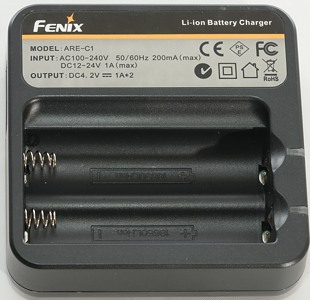
Fenix made flashlight for a couple of years, lately they have also started on LiIon batteries and now a charger.
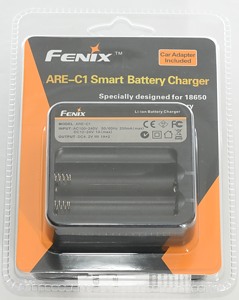
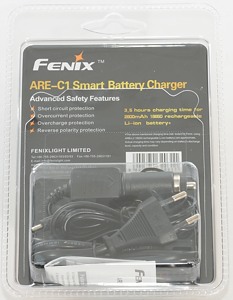
The charger comes in a blister pack.
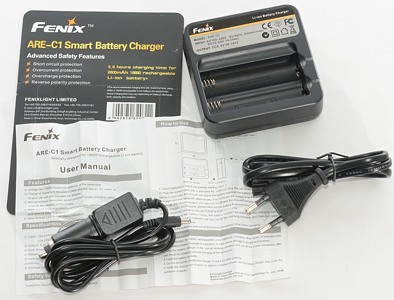
The box contained the charger, a car adapter, a power cable and a instruction manual.
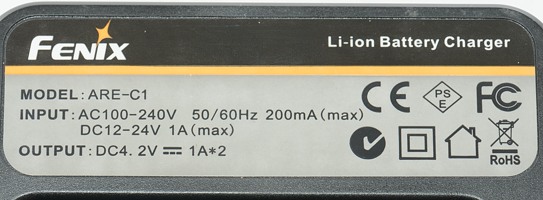
The charger list its specifications on the front of the charger.

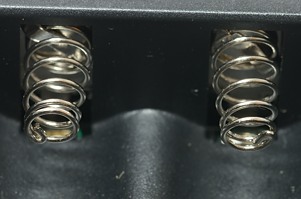
The plus connection is slightly raised, this means that the charger can be used with flat top batteries. The minus connection is a spring, this means spacers for anything but 18650 length batteries.
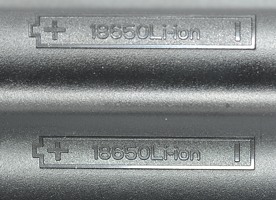
The charger has a polarity marking in each slot.


Power can be supplied from the supplied mains adaptor or from a car adapter.


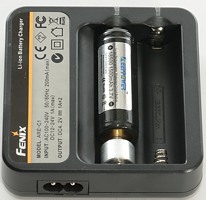
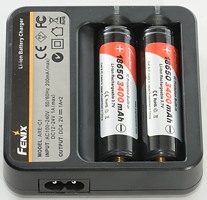
The charger can handle 69 mm long batteries including flat top cells.
Measurements
Without power connected, the charger draws up to 2mA from a battery.
With power connected the charger draws 1mA from a fully charged battery.
The charger is slow at detecting detecting voltage changes when charging, up to 50 seconds.
The measuring pulses will first occur when the battery voltage is above 3.8 volt.
Below 0.55 volt the charger will not supply any current, i.e. it cannot reset a protection.
Above 0.55 volt the charger will charge with full current.
The charger will restart charging if the battery drops below 4.0 volt, after power loss or when a battery is put into the charger.
Two batteries in the charger will not change the charge current, i.e. the channels are truly independent.
Because each channel is independent, the different voltages and currents vary between the channels with a small amount.
.png)
The first test is with a 18650 battery, the charger uses constant current at two different settings. It starts with 1A charging and when the battery reach 4.2 volt it will drop to 0.5A charging. The small spikes are the charger pausing the current to measure voltage.
.png)
My old 16340 cell does not look nice on the charger, one reason is because the charger is designed for batteries with 1000mAh or more, not less than 300mAh as this cell has left. The electronic is not fast enough to handle the voltage rise.
%20%232.png)
The second channel works like the first, but uses a slightly lower current.
.png)
Using both channels at the same time does not change the charging in any significant way.

Using the oscilloscope I can see the pulses, there is about 50 seconds between them, i.e. the it can take up to 50 seconds before the charger sees a voltage change (That is the reason for the problem with the 300mAh cell).
These pulses are only present when the battery voltage is above 3.8 volt.

A closer look at a single pulse, it is 0.25 second long.
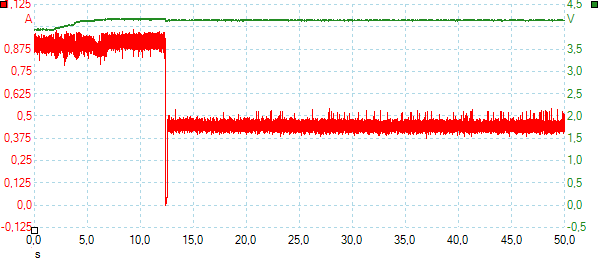
Here I did catch the measuring pulse, just after the voltage reached 4.2 volt and the charger will immediately after the measuring pulse reduce the current to 0.5A.
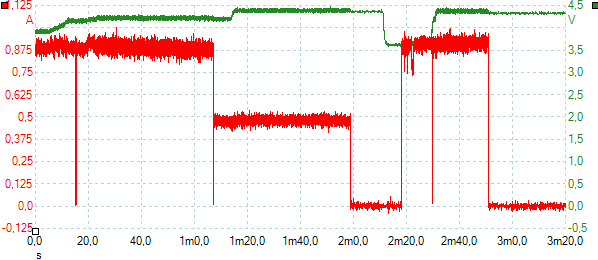
Here I am having some fun with the slow measuring, I change the voltage and the charger adjust the current at the next measuring pulse. When the charger is off, the delay is much shorter, before it turns on again.
Doing the above traces I use a "fake" battery, i.e. a lab. power supply paralleled with a power resistor.
Conclusion
This charger does not follow the recommended charge procedure for LiIon batteries, but it does charge them to 4.2 volt and then turns off.
With only a constant current charge I will rate this charger as acceptable.
Notes
Here is an explanation on how I did the above charge curves: How do I test a charger














.png)
.png)
%20%232.png)
.png)



